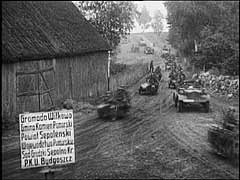You searched for: 【世界杯下注qee9.com】加拿大28数据统计500期q9u2c
<< Previous | Displaying results 61-70 of 249 for "【世界杯下注qee9.com】加拿大28数据统计500期q9u2c" | Next >>
-
Onlookers view the damaged Reichstag
PhotoOnlookers in front of the Reichstag (German parliament) building the day after it was damaged by fire. On this same day, the Nazis implemented the Decree of the Reich President for the Protection of the People and the State. It was one of a series of key decrees, legislative acts, and case law in the gradual process by which the Nazi leadership moved Germany from a democracy to a dictatorship. Berlin, Germany, February 28, 1933.
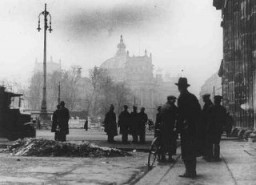
-
Aftermath of pogrom in Iasi
PhotoRoma (Gypsies) remove bodies from the Iasi-Calarasi death train during its stop in Tirgu-Frumos. Two trains left Iasi on June 30, 1941, bearing survivors of the pogrom that took place in Iasi on June 28-29. Hundreds of Jews died on the transports aboard crowded, unventilated freight cars in the heat of summer. Romania, July 1, 1941.
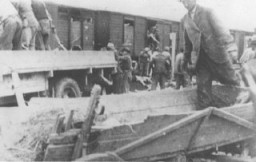
-
1945 portrait of Eta Wrobel
Photo1945 portrait of Eta Wrobel who was born on December 28, 1918, in Lokov, Poland. During the Holocaust, Eta helped organize an exclusively Jewish partisan unit of close to eighty people. She was the only child in her family of ten to survive.
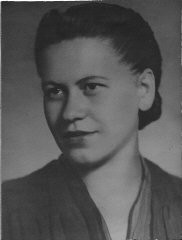
-
Photo taken a few weeks before World War II began
PhotoPhoto taken a few weeks before World War II began. Regina is at the right of the front row. Kunow, Poland, July 28, 1939.

-

-
Kamenets-Podolsk
ArticleIn August 1941, Kamenets-Podolsk became the site of a mass killing of Jews. This was one of the first large-scale mass murders of the Final Solution.

-
Refugee camp in Zbaszyn
PhotoView of Zbaszyn, the site of a refugee camp for Jews of Polish nationality who were expelled from Germany. The Jewish refugees, hungry and cold, were stranded on the border, denied admission into Poland after their expulsion from Germany. Photograph taken between October 28, 1938, and August 1939. Warsaw-based historian, political activist, and social welfare worker Emanuel Ringelblum spent five weeks in Zbaszyn, organizing assistance for the refugees trapped on the border.
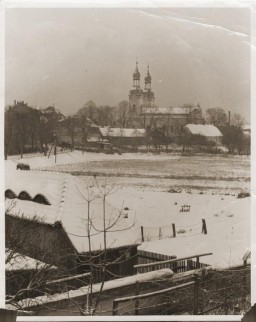
-
View of the refugee camp in Zbaszyn
PhotoView of the flour mill in Zbaszyn, which served as a refugee camp for Jews expelled from Germany. The Jewish refugees, hungry and cold, were stranded on the border, denied admission into Poland after their explusion from Germany. Photograph taken between October 28, 1938, and August 1939. Warsaw-based historian, political activist, and social welfare worker Emanuel Ringelblum spent five weeks in Zbaszyn, organizing assistance for the refugees trapped on the border.

-
Destruction of the Lodz Ghetto
Timeline EventBeginning on August 9, SS and police units liquidate the Lodz ghetto.
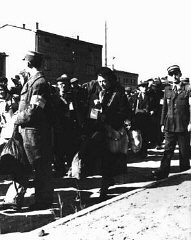
-
Germany invades Poland
FilmGermany invaded Poland on September 1, 1939, beginning World War II. Quickly overrunning Polish border defenses, German forces advanced towards Warsaw, the Polish capital city. This footage from German newsreels shows German forces in action during the invasion of Poland. Warsaw surrendered on September 28, 1939.
